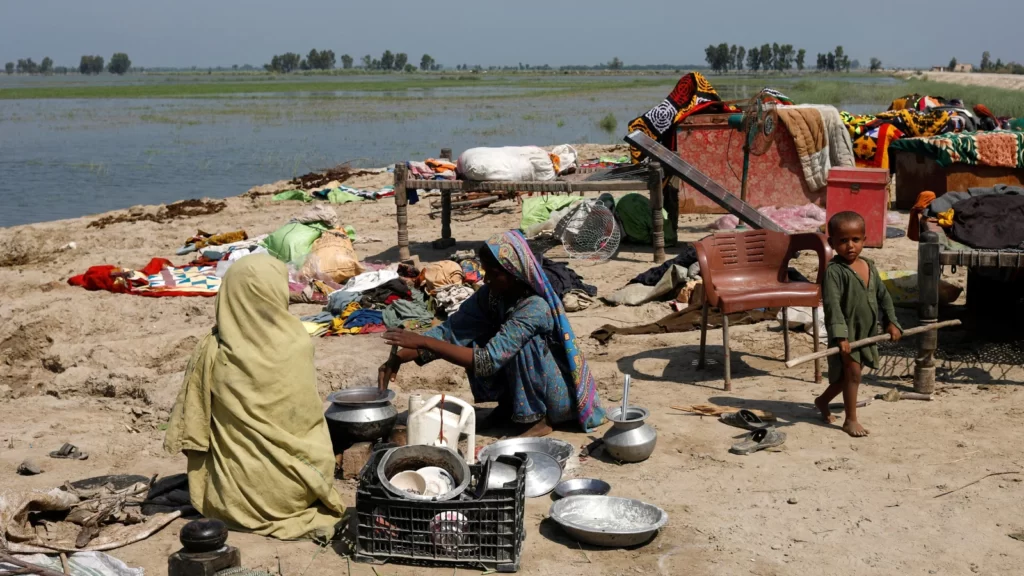According to a Pakistan minister, international charity organizations working to assist the hundreds of thousands of people in Pakistan who have been uprooted by catastrophic floods have requested that limits on food imports from Pakistan’s former adversary India be loosened.
Floods brought on by unusually high monsoon rains have killed more than 1,100 people, including 380 children, and submerged a third of Pakistan. It is being referred to as a “unprecedented climate calamity,” and the United Nations has made an appeal for $160 million to help.
The anguish of the millions of people affected by the calamity in Pakistan is being made worse by the country’s rising food prices.
In order to allow supplies of vegetables and other food to enter, the government is considering easing restrictions on the mainly closed border with India, according to Finance Minister Miftah Ismail.
Also Read: Prince Harry disliked by 66% of Britons: public opinion
Ismail wrote on Twitter on Wednesday that “More than one foreign agency has petitioned the administration to allow them to import food commodities from India over the land border.”
He added, “After speaking with its coalition partners and important stakeholders, the government will decide whether to permit imports or not based on the supply shortage position.”
Since they were separated from British India in 1947, the nuclear-armed neighbours have engaged in three wars, and their border is heavily militarised and largely shut off.

Despite historical, cultural, and familial ties, there is very little trade and travel between the Hindu India and the Muslim Pakistan.
Pakistan has gotten 390.7 millimetres of rain, or approximately 190% more than the 30-year average, in the quarter through August of this year (15.38 inches). The 50 million-person Sindh province in the south, which received 466% more rain than the 30-year normal, was the hardest devastated.
Homes, businesses, infrastructure, and crops have been destroyed by flash floods that surged out of northern highlands. According to the government, 15% of South Asia’s 220 million people, or 33 million people, have been impacted.
Also Read: Reliance AGM makes big announcements: here is the list
Armed forces helicopters have been busy rescuing stranded residents from rooftops and isolated parts of dry ground and dropping supplies in inhospitable places.
Flooding is occurring along the Indus river’s length as enormous amounts of water are being dumped into it from the country’s northern highlands to its southern plains.
Fayyaz Ali, a 27-year-old villager in Sindh’s severely affected Shikarpur area, has managed to get his family to safety but has little prospect of surviving his modest house, which is engulfed in floodwaters.
Major thoroughfares elevated above the fields have transformed into a haven where individuals trying to find cover from the sun and rain under plastic with their bundles of possessions. Farm animals look on their owners for protection.
Also Read: BJP says “building of corruption collapsed” after twin towers demolished
The authorities reported that preliminary estimates put the flood damage at more over $10 billion. It has launched a global plea for assistance in addressing the repercussions of what it has dubbed a human-caused climate catastrophe.

